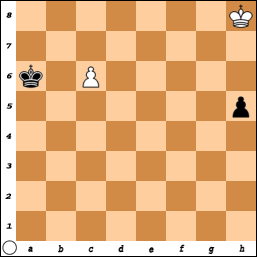
Frank James Marshall was born on August 10 1877 In New York. His family moved to Montreal Canada when he was 8 for 11 years. When he was 10 he began playing chess and by 1890, he was one of the leading players in Montreal.
He won the U.S. chess championship in 1904, but did not accept the title because the current U.S. champion, Harry Nelson Pillsbury, did not compete.
Pillsbury died in 1906 and Marshall again refused to be reconginized as champion,he won the title in 1909 and kept it untill 1936.
Marshall played in tournaments and matches from 1897 to 1940,he played some great games but did not win many tournaments.
His best tournament results and 18 months period was 1904/1905 he won 5 tournaments.Cambridge springs 1904(undeafted),New York masters 1904,3rd American congress 1904,4th Netherlands Congress 1905 and Barmen International 1905.
He played Lasker for the World championship in 1907 the result was lost 8, won 0, drew 7.
Marshall has a bad "public" match record he was beat by Tarrasch 8-1 Capablanca 8-1, but he won matches against Janowsky,Napier,Mieses and Leonhardt true not great players but he did win matches.
Marshall captained the U.S. teamp at the Chess Olympiads in the 1930s. He inspired them to 4 gold medals from 4 Olympiads.In those teams Marshall had Samuel Reshevsky and Rubin Fine.This was befor the Russians entered the Olympiad.
He was one of the first 5 Grandmasters of chess a title given by the Tsar of Russia in 1914.
The Marshall Attack in the ruy Lopez is a well known openning and is still used today.
On November 9, 1944, he was walking to a friend's house when he collapsed from a heart attack and died in the street.
I give 4 games of Marshall the American beauty,the pipe game and Marshalls notes to this game, a crazy game against Dus chotimirsky and what many think is his best game played in Ostend 1905 against Chigorin.
The American Beauty
The Pipe game
The pipe game notes
1.d4 {Notes by Marshall. Britisher Amos Burn was a very
conservative player who liked to settle down for a long
session of closed, defensive chess. He loved to smoke his pipe
while he studied the board.} d5 2.c4 e6 {Burn began hunting
through his pockets for his pipe and tobacco. } 3.Nc3 Nf6
4.Bg5 Be7 {Not much thought needed on these moves, but Burn
had his pipe out and was looking for a pipe cleaner.} 5.e3 O-O
6.Nf3 b6 7.Bd3 Bb7 8.cxd5 exd5 { He began filling up his
pipe. I speeded up my moves.} 9.Bxf6 Bxf6 10.h4 { Made him
think on that one. And he still didn't have the pipe
going. The threat is Bxh7+, Kxh7; Ng5+, known as the Pillsbury
Attack.} g6 11.h5 Re8 12.hxg6 hxg6 { Now he was looking for
matches. } 13.Qc2 Bg7 14.Bxg6 fxg6 { He struck a match and
appeared nervous. The match burned his fingers and went
out. }15.Qxg6 Nd7 {Another match was on its way. } 16.Ng5 Qf6
{ He was puffing away and lighting up at last, but too late. }
17.Rh8+ Kxh8 18. Qh7# { Poor Burn. I think I swindled him out
of that one. If he could only have got that pipe going, it
might have been a different story. He took it good naturedly
and we shook hands. Then his pipe went out. } 1-0
The crazy game
When Dus Chotimirsky played his 12th move Qg3 so the story goes he went into the players waiting room and said in his broken English “poor Marshall dead”.
When the players gathered around the board they saw blacks next move was either Qh2# or Qxg2#.
But Marshall just played 13Qxg4 When Dus chotimirsky saw this he swept the pieces from the board and said “oh Marshall not dead I dead”
His best game
Marshall was a fine attacking player that always went for the win,but by trying to win every game Marshall lost games that other players would have agreed a draw.This finally got to him in 1904 when he wrote a letter to a friend saying “when will I learn that a draw counts more than a loss”









